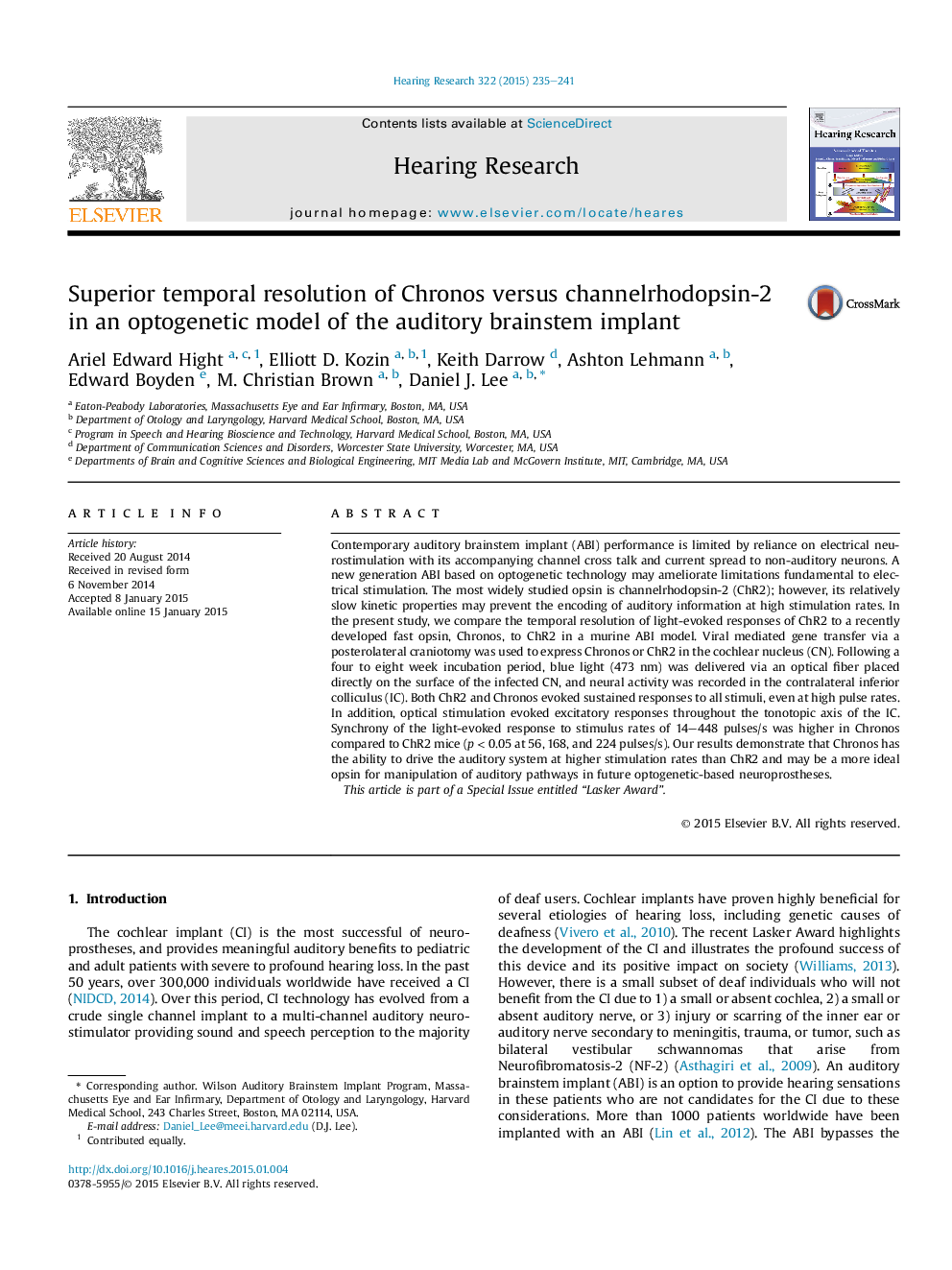| کد مقاله | کد نشریه | سال انتشار | مقاله انگلیسی | نسخه تمام متن |
|---|---|---|---|---|
| 6287244 | 1615578 | 2015 | 7 صفحه PDF | دانلود رایگان |

- Optogenetic stimulation of the cochlear nucleus is feasible using Chronos.
- Translational gene delivery methods are demonstrated for the dorsal cochlear nucleus.
- Chronos demonstrates improved temporal kinetics compared to ChR2.
Contemporary auditory brainstem implant (ABI) performance is limited by reliance on electrical neurostimulation with its accompanying channel cross talk and current spread to non-auditory neurons. A new generation ABI based on optogenetic technology may ameliorate limitations fundamental to electrical stimulation. The most widely studied opsin is channelrhodopsin-2 (ChR2); however, its relatively slow kinetic properties may prevent the encoding of auditory information at high stimulation rates. In the present study, we compare the temporal resolution of light-evoked responses of ChR2 to a recently developed fast opsin, Chronos, to ChR2 in a murine ABI model. Viral mediated gene transfer via a posterolateral craniotomy was used to express Chronos or ChR2 in the cochlear nucleus (CN). Following a four to eight week incubation period, blue light (473 nm) was delivered via an optical fiber placed directly on the surface of the infected CN, and neural activity was recorded in the contralateral inferior colliculus (IC). Both ChR2 and Chronos evoked sustained responses to all stimuli, even at high pulse rates. In addition, optical stimulation evoked excitatory responses throughout the tonotopic axis of the IC. Synchrony of the light-evoked response to stimulus rates of 14-448 pulses/s was higher in Chronos compared to ChR2 mice (p < 0.05 at 56, 168, and 224 pulses/s). Our results demonstrate that Chronos has the ability to drive the auditory system at higher stimulation rates than ChR2 and may be a more ideal opsin for manipulation of auditory pathways in future optogenetic-based neuroprostheses.This article is part of a Special Issue entitled “Lasker Award”.
Journal: Hearing Research - Volume 322, April 2015, Pages 235-241